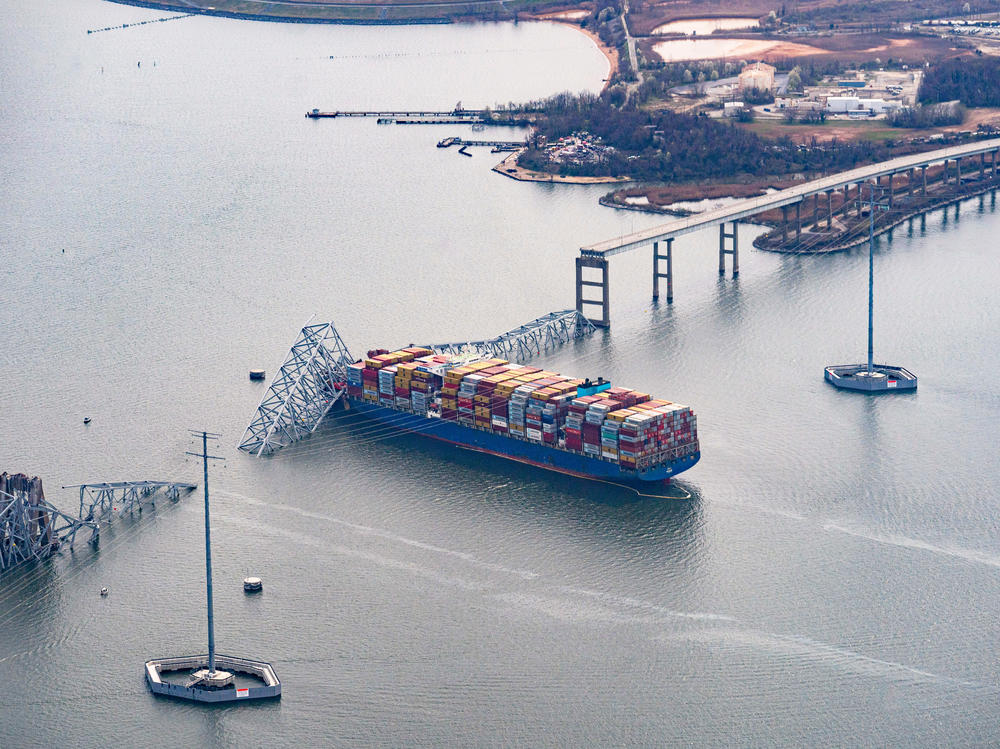Section Branding
Header Content
Baltimore's bridge collapse is expected to disrupt supply chains
Primary Content
Marine traffic around the Port of Baltimore is at a standstill after the Francis Scott Key Bridge collapsed Tuesday, an accident that is expected to disrupt shipping and supply chains.
A big container ship collided with a support pillar just before 1:30 a.m. Tuesday, sending the bridge crashing into the water. Authorities say two people were rescued but six are presumed dead after falling into the Patapsco River.
Market analysts are also looking at the impact the accident could have on an important auto imports hub.
Baltimore's port is not the largest in the country, but it handles the highest volume of shipments of cars and light trucks.
Some carmakers will have to divert to other East Coast ports, in New York, New Jersey or Roanoke, Va., says Abe Eshkenazi, who heads the Association for Supply Chain Management. That has the potential of moving goods farther from their final destination, which could raise costs, he adds.
"In the short term, we're going to have to address the ships that are already in port that can't get out. And then similarly, we have a number of ships that are already in transit that are scheduled to come into the port that can't get in," Eshkenazi says.
Shipments of coal and sugar will also be affected, as will warehousing and trucking operations around Baltimore.
The bridge collapse is not expected to have a significant impact on global shipping. That's already under pressure from attacks by Houthi militants in the Red Sea and a drought in Panama that has snarled traffic at the Panama Canal.

